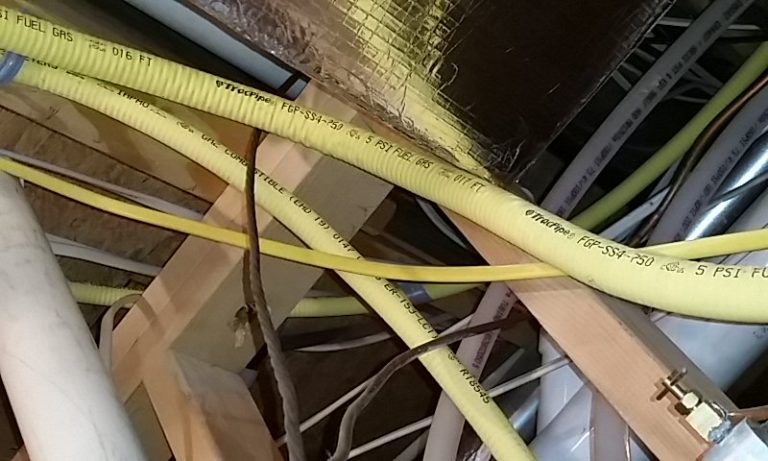Important Information- The information here is for reference only.
THIS ALERT AFFECTS:
Property owners whose home or other structure has been outfitted with corrugated stainless steel tubing (CCST), which is flexible piping used to transport natural and propane gas from an outside meter to various appliances and machinery within the property.
Damages
Gas leaks, lightning-related fires, injury, death
Companies
Omega Flex, Inc., Ward Manufacturing LLC, Titeflex Corporation, Parker-Hannahfin Corporation, Truflex, Microflex, U.S. Hose and Hose Master
Additional Details
It is estimated that at least 6 million homes across the United States have been outfitted with CSST.
Date
As of August 2011, there have been more than 140 lightning-related fires in properties containing CSST.
Individuals who own a home or other structure outfitted with corrugated stainless steel tubing (CCST) may be entitled to financial compensation. Allegations have surfaced that CSST gas piping products contain design and manufacturing defects that put properties at risk for lightning-induced fire damage. Florida homeowners have already filed a class action lawsuit against one CSST manufacturer and, in light of allegations that all CSST products contain the same inherent design defects, it is expected that several other class action lawsuits could be viable. (This case has since been dismissed).
CSST has been installed in at least 6 million homes across the country. If you suspect your property has been outfitted with CSST, you may be able to take legal action against the manufacturer – even if your property has not suffered fire-related damage. Attorneys may be able to help you request a free inspection of your property by a CSST-certified inspector.
CSST Failures May Lead to Lightning-Related Fires
CSST was developed in Japan in the early 1980s to protect against damage from earthquakes and has been available in the U.S. market since 1990. Touted as a favorable alternative to traditional, rigid black iron pipes, the flexible gas tubing can wrap around corners and is easier to install; however, a key design difference has been noted in the newer product and may be putting properties at risk for lightning-related fire damage.
It has been estimated that the wall thickness of CSST measures approximately .011 inches, compared to .113 inches for the black iron pipes. It has been alleged that the wall thickness, or lack thereof, in CSST is too thin to withstand the electrical energy produced by lightning strikes.
When a lightning strike occurs, electrical energy will travel through any conductive path, such as gas piping, until it is able to reach the ground. Traditional black iron pipes are able to withstand this energy without issue; however, if a direct or indirect lightning strike energizes CSST, the piping will not be able to carry the charge, which will look to jump to a less resistant pathway, such as a nearby metal pipe or ventilation duct. The heat of this event can penetrate the thin walls of the CSST, even though the electrical arcs last only a fraction of a second. When the piping melts, the gas inside can escape and cause a gas-fueled fire.
Does My Home Contain CSST?
You may be able to visually identify CSST if it is exposed to view. CSST consists of flexible stainless steel tubing covered with a vinyl or polyethylene jacket, which may be yellow or black. CSST may be installed along floor joists, above basements, in attic spaces or connected to water heaters or other appliances. The coating of the CSST may be stamped with the manufacturer’s name. CSST manufacturers and their related product(s) names are listed below:
- Omega Flex Inc. – TracPipe and CounterStrike
- Ward Manufacturing LLC – Wardflex and Wardflex II
- Titeflex Corporation – Gastite and FlashShield
- Parker-Hannifin Corporation – Parflex
- Truflex – Proflex
- Microflex
- U.S. Hose
- Hose Master
Proper Bonding May Not Prevent Fire Risk
It has been alleged that CSST manufacturers have known for years that their products are vulnerable to lightning strikes and could pose a risk of property damage, injury and death if the structure is struck by lightning. Despite claims from CSST manufacturers that their products are safe when properly bonded, it has been alleged that even if all mechanical and electrical systems of the property are properly bonded, CSST still poses a risk of a lightning-related fire. (https://www.classaction.org/csst)

